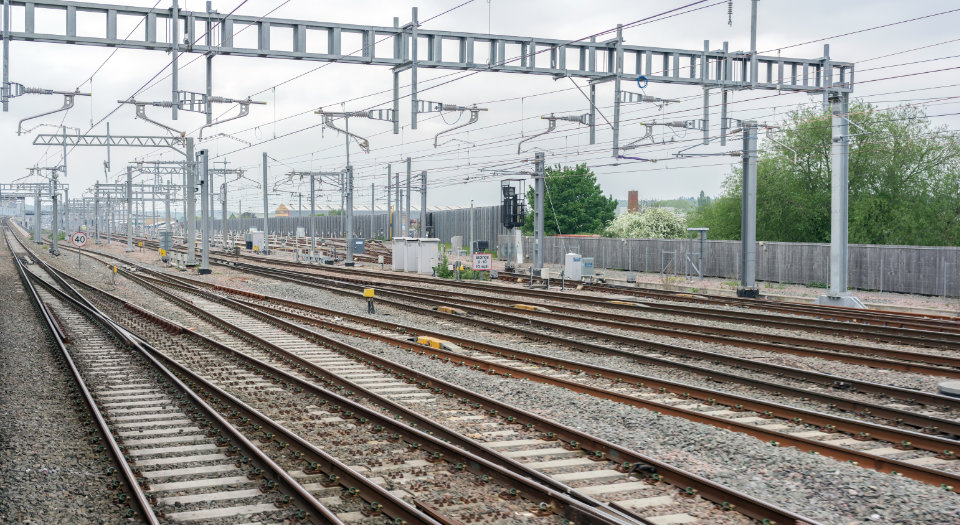The railway network in Britain is vast, spanning over 20,000 miles of track with 40,000 bridges, tunnels, signals, crossings, and stations.
Keeping this infrastructure running safely and reliably is no small task. It demands a coordinated, multi disciplined approach, meticulous planning, regular inspections, and maintenance by a workforce equipped to handle the diverse challenges of sustaining such a complex system.
For years the railway has relied heavily on a small fleet of ageing measurement trains to monitor critical infrastructure assets and conditions. While these specialist trains have served the industry well, their limitations have become apparent and this monitoring method has become restrictive, expensive, and unreliable. These specialist trains have reached the end of their life expectancy and are in dire need of replacement.
Additionally, engineers spend substantial time manually inspecting assets, often walking miles of track amidst difficult conditions. This manual approach not only puts unnecessary strain on the workforce, but also leads to wasted time and resources with possessions taken for track walking, only to validate suspected faults rather than directly rectifying them.
Embracing Innovation: A New Era for Infrastructure Monitoring
Embracing technology, innovation, and smarter methods of working can lead to improved safety and efficiency. By leveraging existing passenger and freight services, we can gather invaluable data on railway assets, reducing the reliance on dedicated vehicles. By deploying in-service monitoring techniques, digital inspection teams can review network assets in real time, locating and identifying faults quickly, reducing the need for manual inspections.
With the integration of Artificial Intelligence, Modelling and Data Science, ground teams will have continuous assessment and intelligence at their fingertips, enabling targeted inspections and faster maintenance responses.
The demand for better infrastructure monitoring is accelerating and technology is eagerly waiting in the marketplace.
Beyond the Human Eye: Unleashing the Power of Technology
Cutting-edge technologies such as Thermal Imaging, Acoustic Monitoring, LiDAR, Radar, and Intelligent Cameras can gather incredible detail and detect subtle changes that may go unnoticed by the human eye. By integrating these advanced technologies onto trains already running in service, we can collect highly accurate measurements, generate rich amounts of intelligent data, and detect potential problems or defects at an early stage.
Monitoring technology can identify changes, anomalies, or defects, such as track misalignments, worn-out components, low or high railhead temperatures and hot and cold spots on points or OLE. It can also provide detailed 3D models and point clouds to monitor railway bridges, tunnels, and structures effectively, allowing the identification of structural deformations, cracks, or other signs of deterioration.
By monitoring surface degradation and embankment changes, monitoring technology can even prevent landslips by enabling operators to mitigate potential issues before they pose a risk or cause disruption. It can accurately map vegetation and identify areas where it encroaches track clearance limits, facilitating timely action to prevent hazards such as obstructed signals or tree falls.
The watchful eyes of technology don’t miss a beat. Detecting even the slightest changes early on enables preventative maintenance, effectively mitigating the risk of future failures and prolonging the lifespan of rail infrastructure.
Data Driven Decision Making: Unlocking New Insights
By analysing the wealth of data using advanced algorithms and machine learning, we can identify anomalies, monitor deterioration, and predict asset failure. We can enable predictive modelling and an improved understanding of asset lifecycles, enabling informed decisions on maintenance planning and renewals.
Imagine the technology identifying a change in the tracks, a misalignment unbeknown to the naked eye. Swift action can be taken, and the fault rectified before it could lead to an incident.
Working Safer and Smarter: A Virtual View of Infrastructure
Transforming how we monitor infrastructure equips maintenance teams with a virtual view of the network, allowing them to predict, prevent, focus on critical tasks, and mitigate failures effectively.
Remote monitoring reduces the need for physical inspections, making it particularly valuable for safely monitoring large stretches of the railway network or inaccessible areas that may be difficult to access or inspect manually. It enables optimised maintenance schedules, better resource allocation, and minimises operational downtime.
Maintenance teams, once burdened by the limitations of manual inspections, now find their jobs transformed. Remote monitoring becoming their ally, allowing them to work safer and smarter, a new era of railway safety is born.
The Future is Now: Unlocking Potential
Infrastructure issues are not only costly but also pose significant safety risks and can cause major disruptions to the network. In-service monitoring unlocks vast opportunities to gather data that allows for better strategic planning, improved decision-making, optimised maintenance, and enhanced performance on the railway.
The integration of monitoring technology provides operational insight, improves efficiency, reduces the risk of asset failure, and crucially, creates long-term value for money. In-service monitoring isn't just a vision for the future; it's happening now. With ongoing trials and industry-wide support gaining momentum, there is real opportunity to reduce incidents and delays, improve performance and ultimately creating a safer and better rail experience for all.


